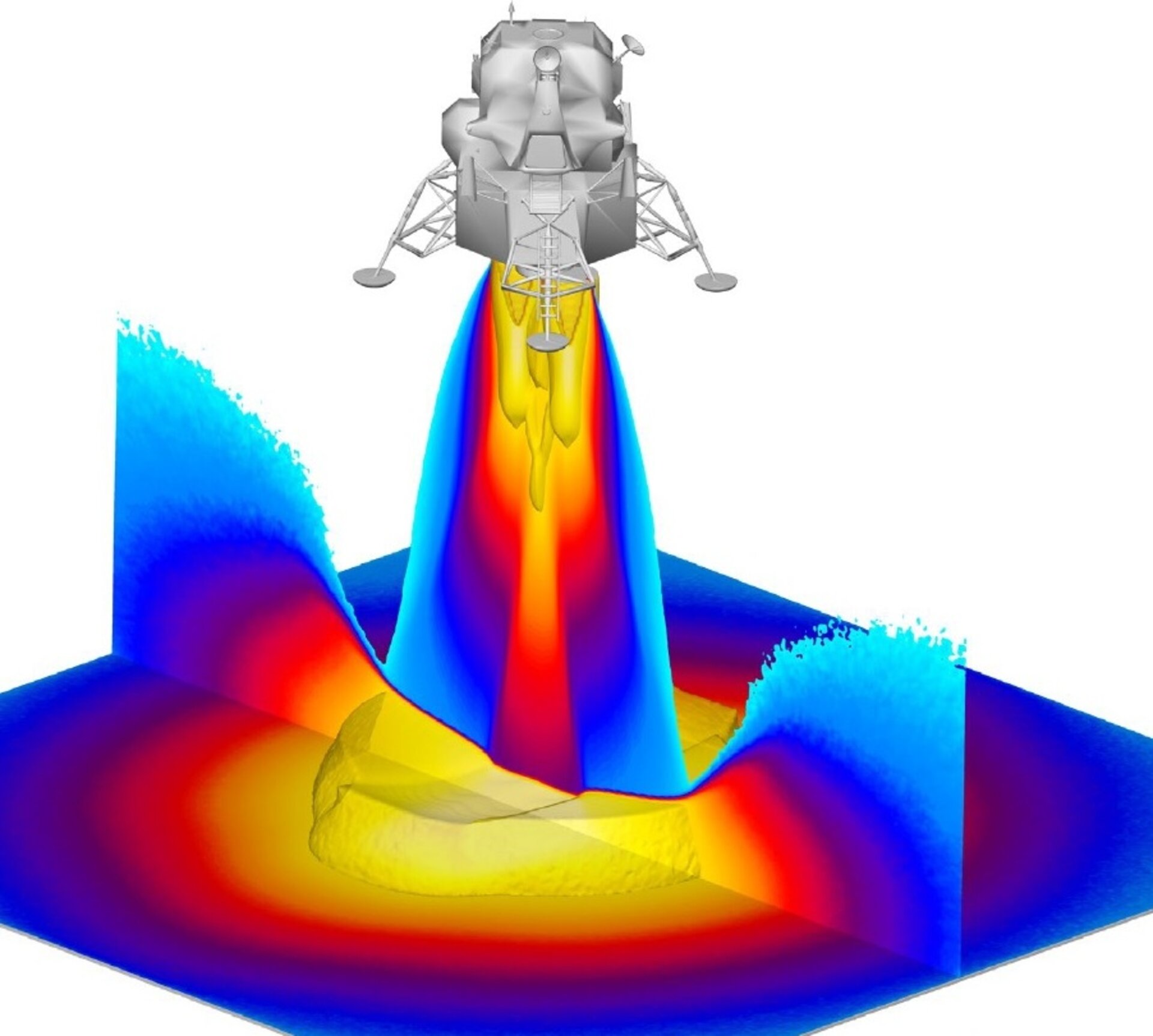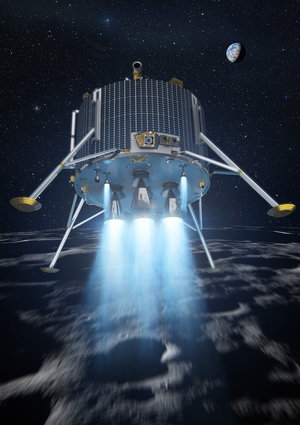

Agency
Simulating dust interaction with lunar lander thruster plume
Carlos Soares of the Cont amination Control Engineering team at NASA’s Jet Propulsion Laboratory (JPL) explained that the problem begins during touchdown – depending on the size of lander involved, its rocket thrusters could dislodge tonnes of lunar regolith during touchdown, which might then lodge on lander surfaces as well as covering the entire landing area. JPL has therefore developed a complex modelling-based framework to simulate lunar landing events, starting with recreating Apollo landings, to help enable degradation assessments.





